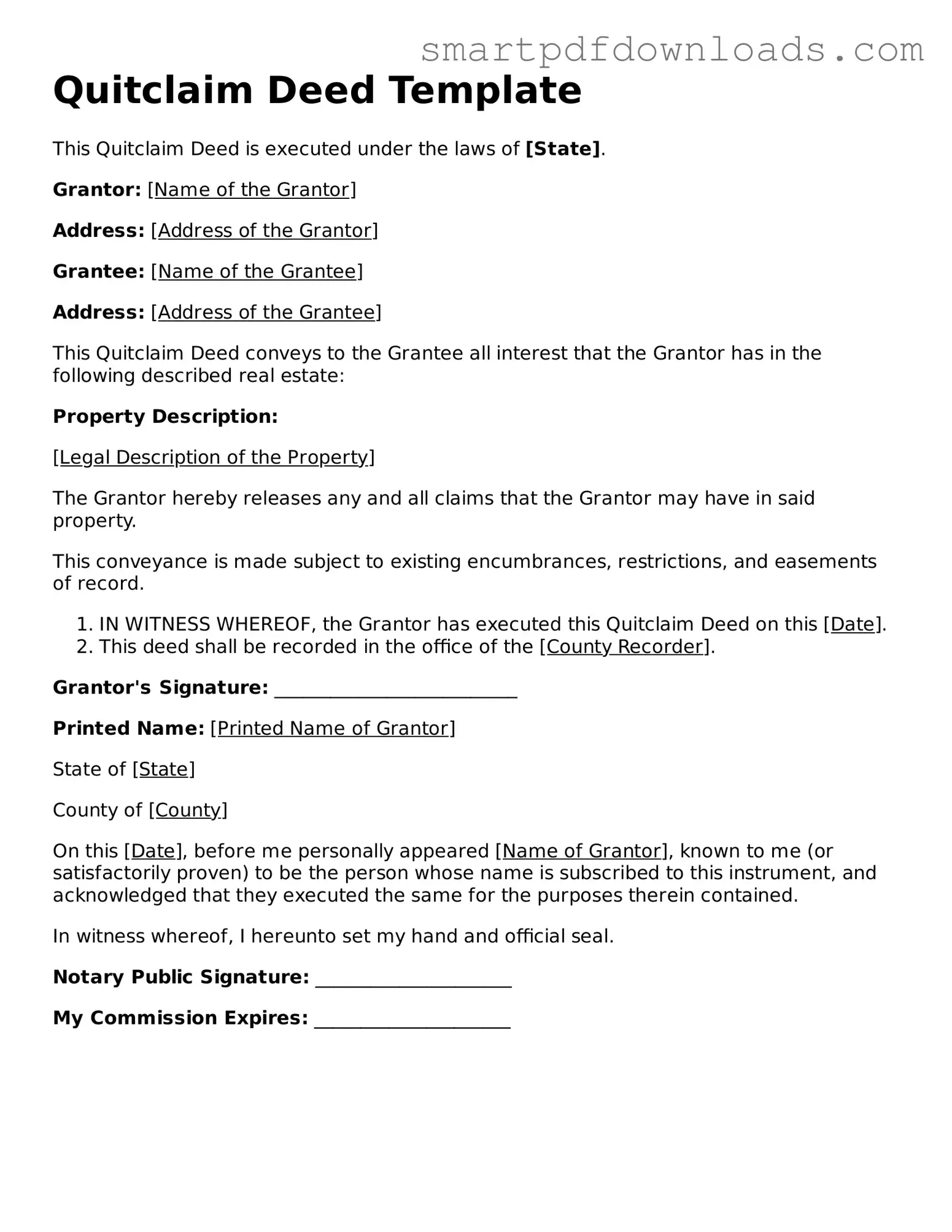Quitclaim Deed Template
This Quitclaim Deed is executed under the laws of [State].
Grantor: [Name of the Grantor]
Address: [Address of the Grantor]
Grantee: [Name of the Grantee]
Address: [Address of the Grantee]
This Quitclaim Deed conveys to the Grantee all interest that the Grantor has in the following described real estate:
Property Description:
[Legal Description of the Property]
The Grantor hereby releases any and all claims that the Grantor may have in said property.
This conveyance is made subject to existing encumbrances, restrictions, and easements of record.
- IN WITNESS WHEREOF, the Grantor has executed this Quitclaim Deed on this [Date].
- This deed shall be recorded in the office of the [County Recorder].
Grantor's Signature: __________________________
Printed Name: [Printed Name of Grantor]
State of [State]
County of [County]
On this [Date], before me personally appeared [Name of Grantor], known to me (or satisfactorily proven) to be the person whose name is subscribed to this instrument, and acknowledged that they executed the same for the purposes therein contained.
In witness whereof, I hereunto set my hand and official seal.
Notary Public Signature: _____________________
My Commission Expires: _____________________
